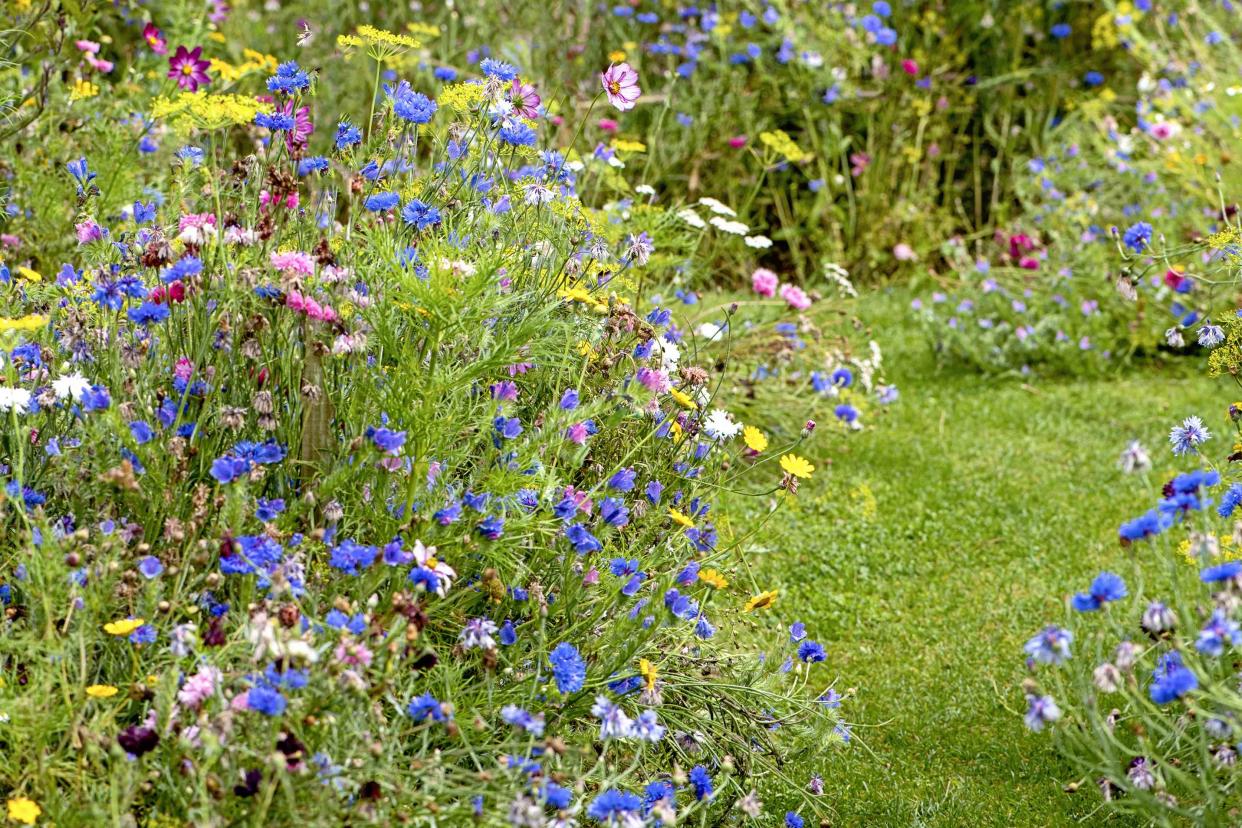'Chaos Gardening' Is the Low-Maintenance Way to Grow Flowers All Season
If you like cottage gardens but aren't thrilled with the upkeep, this gardening style may be for you.

Jacky Parker/Getty Images
‘Chaos gardening’—an uncurated practice of throwing a bunch of seeds down in soil—has gone viral in recent years for its practicality and accessibility. For those who dream of having a sweet-smelling flower garden, but find traditional gardening intimidating, don't sweat—this method is something pretty much anyone can try. We spoke with a meadow designer to see how easy this process actually is, whether the final look is as Instagram-worthy as you’d expect, and how to create a chaos garden that works in any space.
Meet the Expert
Kori Kasper is a Meadow Designer for Branch Gardens.
What Is Chaos Gardening?
Chaos gardening is a gardening technique that involves tossing seeds and seeing what happens. “Chaos gardening is all about breaking the rules of traditional gardening. It’s about letting plants grow however they want, without symmetry or strict order,” says meadow designer Kori Kasper.
As such, a chaos garden embraces a plant’s natural life cycle by facilitating a process that mimics nature. Think of how the wind carries seeds and how many plants self-seed after their growth cycle. Rather than sowing precisely, you scatter. And rather than cutting back the plants after they grow, you let them self-seed (or collect the seeds to throw into the wind later). In many cases, different plant varieties share space rather than having clearly defined spaces.
For beginners or people with low energy or physical limitations, chaos gardening is a great way to get outside and into nature. “It makes gardening fun again by letting you relax and get creative rather than worrying about everything being perfect,” says Kasper. "In a chaos garden, it’s all about embracing the wild side of nature and enjoying the ride.”
How to Start a Chaos Garden
You could buy a pack of wildflower seeds and toss them on your lawn to create a meadowscape or enjoy some low-maintenance tomato plants that went to seed the year before. However, to bring a slightly more intentional chaos garden into your yard, a little planning goes a long way.
Step 1: Pick a Garden Style
There are a few options for a chaos garden, like a low-maintenance native garden, a wildflower or pollinator garden, a produce garden (which requires more time commitment), or an annual garden that includes plants that only last a season. Look into some pre-mixed seed packs with seeds that are specific to your location and compatible with each other.
Tip
For native chaos gardens, Kasper recommends picking up native seeds from a nursery like Prarie Moon Nursery.
Step 2: Select a Location
According to Kasper, you can apply chaos gardening to any limited space in your yard. Choose an intentional location that has the appropriate light requirements for the plants you pick. You will usually get the most blooms or produce in a spot with full sun.
“It’s important to designate a specific space for your chaos garden to maintain intentionality and prevent it from appearing unkempt or weedy,” says Kasper. “Adding chaos to a traditional garden may resemble weeds, and neighbors may become concerned.” If you already have a more defined garden, create some separation with hardscaping.
Step 3: Review Local Regulations
Every municipality has rules for how lawns and shared spaces near curbs can look. Front lawns may need to be heavily manicured, and backyards may only be able to reach a certain height. Also, some invasive species may be outlawed in your area but not in another. Carve out the potential space you want to plant, then investigate whether you need to follow any do's and don'ts.
Step 4: Prepare the Soil
After you choose a location, remove all existing vegetation, including grass and weeds, to establish a clean slate and a solid starting point. If your soil lacks nutrients, top it off with a layer of garden soil. According to Kasper, this step will allow you to enjoy your garden more and spend less time working in it as it grows. As the garden grows in, you may let some weeds blend in with the garden, or you might decide to pull out others, especially around the edges.
Step 5: Scatter the Seeds
The time you scatter seeds matters. Tossing a bunch of seeds on the ground in high summer is unlikely to give you the results you want, given germination times. Spring or fall are ideal, depending on the type of garden you choose.
With prepped and clear soil, lightly sprinkle your chosen seed mix, then wait and water regularly until the seeds sprout. Sprinkle some more seeds a few weeks later to fill in some sparse areas. Once the plants are established, you can limit watering unless you’re growing produce in a drought-prone area.
Tips for a Better-Looking Chaos Garden
For aesthetics and ease, “it is important to keep the chaos within a defined space, maintain tidiness outside of the garden, and enjoy the process,” says Kasper. However, even after taking all the necessary steps, some people might still not like the look of a chaos garden. As Kasper puts it, “The greatest challenge of chaos gardening is how others perceive it.” Not everyone will appreciate winding and bending plants that vary in height and footprint, and that's OK.
“As naturalistic and native gardening becomes more popular, more people are understanding the benefits and appreciating the aesthetics, but many are still hesitant,” says Kasper. If you’re not turned off by the look of a more natural garden bed, remember that much of gardening is in the process. It’s supposed to be enjoyable, not a chore. “When people see how enjoyable gardening can be, they may be inspired to create their own chaos,” says Kasper.
For more Real Simple news, make sure to sign up for our newsletter!
Read the original article on Real Simple.
